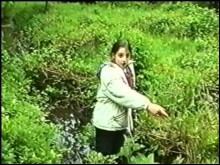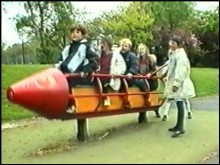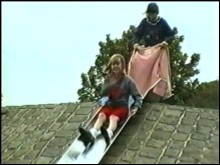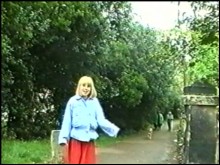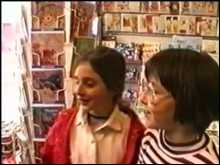Centre for Creative Media Research > Video Critical
Weetwood Primary School: Making the video
|
|
There was a notable difference in social status between the children of this group and those of the others. Coming from one of Leeds' more affluent areas, with parents who included architects and senior managers, the children had more middle-class voices and styles of expression, as well as being more conscious of standards of 'good behaviour'. Interestingly, however, beyond some advantages of articulacy, this did not make them superior videographers. The children appeared, from the first-week group interview, to be interested and concerned about the environment, but often in quite a passive way. Their knowledge of environmental problems, from school and other sources, was quite comprehensive, and well spread throughout the group. This is what previous research suggests we might expect for middle-class children (Lyons & Breakwell, 1994). They knew, for example, about various kinds of pollution, and recycling, were all familiar with the process by which acid rain is produced, and were aware of the dangers to and function of the ozone layer ('protects us from the sun', said several of them immediately). Their awareness of the problems of nuclear power, and why rainforests are being felled was, however, patchy. Quite unlike children in some of the other groups in this study, however, these children had been immersed in a culture of knowledge-gathering, such that their level of knowledge about the environment was perhaps less impressive than at other schools where there was little or no peer credibility attached to being so informed. Asked about aspects of their local area which were environmentally disappointing, the children had some difficulty; uppermost in their minds seemed to be the school dustbins, although pollution in the River Aire was also suggested. In some ways these polite middle-class children were less effective film-makers than their counterparts at other schools. Their patience often meant that greater amounts of dull material were recorded at greater length, where the more assertive working-class children would simply have switched the camera off and moved on to the next setup. Their more passive approach to video-making also meant that they seemed not to think of doing different things with, for example, their presenters in shots. It is certainly not to be denied that these children's articulacy, as well as a general inclination to work reasonably hard in school time, made for an intelligent and engaging video. The point is rather that the levels of creativity and ideas put into their video were equal, but were no greater, than at any of the less well-heeled schools. By the final week of the project, when interviewing each other, the children were quicker to produce pro-environmental responses than they had been at first, and seemed to have an enhanced appreciation of the local area, as well as awareness of its problems - pollution in particular. Their enjoyment of the project was also clear. Summary Unlike those at other schools, these children had a general interest in producing good schoolwork, which might have made the extent to which they had been genuinely concerned about the subject less clear. However, as time went on, it became apparent that most of them did have a broad interest in the environment, the local aspect of which was focused by the project. The children did not suggest grand visual ideas, or much of a structure for the video, but simply made competent material of a relatively unplanned nature. In contrast to children in other groups, they were, at least initially, sometimes less confident on both sides of the camera, perhaps due to an upbringing which might more often have emphasised the importance of behaving respectfully towards expensive technology, and maintaining dignity when under surveillance. |
![]()
The text and images on this site are by David Gauntlett, © 1997, 2004.
Back to > Video Critical home.

